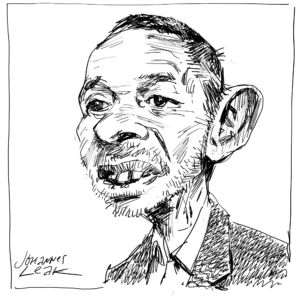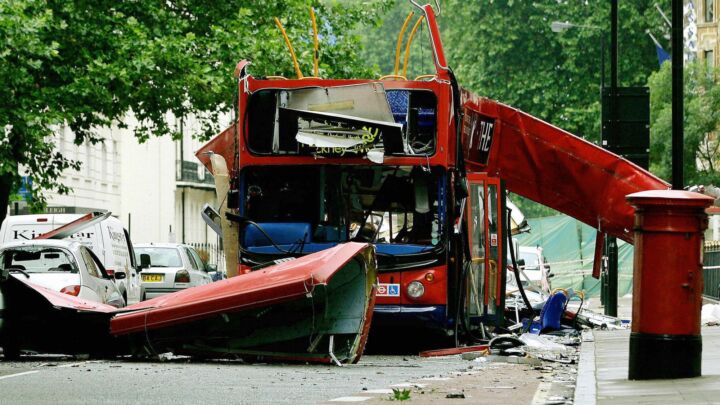Why church officials worship these protesters
No attempt to depict Occupy London as a Second Coming of angry Jesuses can disguise the fact that it remains a shallow moral gesture.

Want to read spiked ad-free? Become a spiked supporter.
As a sociologist, I get suspicious when I am told that some aspect of human experience is beyond comprehension or ‘defies simple characterisation’. That is exactly what many people are currently saying about the Occupy Wall Street and Occupy London street protests.
‘The movement at this stage defies simple characterisations’, says a writer on the left-wing website Indymedia. Observers around the world make a similar point. The Washington Post says this is a ‘leaderless movement’, which does not have ‘an official set of demands’. One columnist after another has noted that these occupations are neither ‘left’ nor ‘right’ and do not communicate a distinct political message and, therefore, it is far from evident what they stand for.
Yet this absence of clarity about what the occupations are for has not stopped media personalities, politicians and opinion-formers from expressing sympathy with them. In the US, politicians from President Barack Obama to Mitt Romney, one of the leading contenders for the Republican Party’s presidential nomination, have affirmed their support for the people occupying Wall Street. Political leaders who usually lash out at protesters appear to be on their side this time. Even right-wing commentators have praised the protesters for drawing attention to the dysfunctional and iniquitous nature of the global financial system.
Why is there such widespread endorsement of a movement that appears to lack principles and objectives? The main reason is that this movement provides a vehicle through which everyone can recycle their own agendas. Everyone from the angry taxpayer to the lifestyle anarchist can join together and let off steam against various targets. One of the Occupy movement’s mottos is ‘We are the 99 per cent’. The motto comes from a statement made by the American Nobel prize-winning economist, Joseph Stiglitz, who denounced the richest one per cent of Americans for oppressing everyone else. ‘Ninety-nine per cent’ is of course a mega-majority; indeed, aside from a handful of parasitical financiers and obese bankers, virtually everyone in the world is included in this virtuous community of the mother-of-all majorities.
In a different era, blaming a tiny number of greedy bankers for a major economic crisis would have been dismissed as a form of economically illiterate scapegoating. Today, however, banker-bashing is one of the principal ways through which political leaders can evade responsibility for the current predicament. But it is not simply opportunism that encourages sections of the political class to identify with the so-called 99 per cent. Their public displays of understanding and empathy for the protesters also reveals more than a little bad faith.
Those familiar with the concept of bad faith will know that it is not necessarily about wilful deception. It is when people under social pressure adopt the values and attitudes of the moment, and in the process disregard their own intuition, that they act in bad faith. In public life, this form of self-deception occurs when public figures are less than certain about what they ought to believe in or stand for. It is bad faith, and indeed bad conscience, which motivates many public figures to defer to the self-appointed representatives of 99 per cent of the people.
The sacralisation of confusion
One of the most conspicuous practitioners of this bad faith is the Church of England. The response of St Paul’s Cathedral, and particularly of its former canon Giles Fraser, to the occupiers on its doorstep offers a sad example of theological and moral confusion. Fraser’s sacralisation of the protest outside his church reduces some of the most profound moments in the New Testament to the Biblical equivalent of today’s gesture-driven protesting. Fraser talks about Occupy London as if it were some kind of Second Coming. ‘I mean, if you looked around and you tried to recreate where Jesus would be born – for me, I could imagine Jesus being born in the camp’, he noted.
Fraser’s fantasies about the messianic potential of the protest are shared by other clerics, too, who believe these occupiers are emulating Jesus’ denunciation of the moneylenders defiling the temple. This sad attempt to recast a very banal secular gesture as a vindication of the legacy of the Son of God can be seen as a desperate attempt to make the church relevant to the lives of young people. More worryingly still, it can also be seen as an opportunistic attempt by the church to harness the moral status enjoyed by these protesters in order to enhance the authority of their waning institution. What Fraser and some of his colleagues fail to appreciate, however, is that their sacralisation of confusion is more likely to diminish the moral authority of their church.
For their part, the protesters seem keen to depict themselves as the true disciples. In a gesture that matches the opportunism and bad faith of their clerical sponsors, the protesters have self-consciously adopted a religious style of communication. So last Saturday, they announced that they would hold a ‘Sermon on the Steps’ of St Paul’s. Their press release promised that the sermon would include ‘readings and reflection, prayer and short speeches by representatives of different faiths, and no faith, all with the theme of Love, Peace and Unity’.
The American political consultant George Lakoff would approve of the way that this press release frames the aspirations of the protesters. Lakoff, who has won a reputation for giving advice on the framing of political rhetoric, has argued that ‘it is a good thing that the occupation movement is not making specific policy demands’, because ‘if it did, the movement would become about those demands’ and if ‘the demands were not met, the movement would be seen as having failed’. In contrast to such political realities, religious rhetoric and prophecy cannot be tested in the real world, and therefore this increasingly pseudo-religious protest cannot be said to have failed.
99 per cent of what?
Of course, the protesters don’t really represent 99 per cent of society. No one elected them to speak on anyone’s behalf. Ninety-nine per cent is a fantasy figure; nowhere does there exist a single constituency that encompasses such a large section of society. Aside from assisting the project of scapegoating, the purpose of the motto ‘We are the 99 per cent’ is to avoid facing up to the fact that, in the real world, this movement lacks a popular constituency. Whatever else it may be, this occupation of urban space is not a grassroots movement.
Protests can, of course, assume a variety of forms. And often they can start off as a modest response to a specific instance of injustice before later expanding their influence. What is interesting about Occupy Wall Street or Occupy London, however, is that they lack a specific local context. In principle, every town square – from Kansas City to Baton Rouge – can serve as a substitute for Wall Street.
Detached from everyday life, this protest gains its meaning and definition from its relationship to the media, rather than its relationship with citizens. Numerous reports have suggested that the transmission of images of these protests by the media has led to a copycat effect around the world. There has been much talk about the way in which ‘thought contagion’ and the memetic ‘reproduction’ of ideas through the media has led to the construction of a global movement.
But the media effect is not confined to the communication of images and slogans. The main contribution of the media is to provide a narrative through which groups of individuals around the world can identify with one another’s identities and actions. What is most striking about the protesters in different parts of the world is that they have more in common with one another than they do with the ordinary people in their own communities.
Arguably, this is not the first example of a protest conducted through a media-cultivated global network. However, what is truly distinctive about this movement is its performative character. The focus of the protesters is not on the achievement of any specific objective, but rather on the performance of protest. That is why they have devoted so much energy to the question of how their occupation is conducted. The elaborate construction of a self-organised democratic community, its self-conscious disavowal of leadership and politics, its insistence that it refuses to accept any labels – these are all dramatic aids to a performance.
And this is likely to be a very long performance. The protesters appear to be very time-rich; they conspicuously lack any sense of urgency about achieving tangible results. Historically, grassroots protesters measured success by the speed with which they successfully realised their objectives. But the passion and anger that once fuelled grassroots movements are absent today. The folks who are drawn to Wall Street or St Paul’s work to a luxurious timescale. The longer they can remain on the streets and carry on performing, then the more successful their protest is considered to be. In a world in which bad faith embraces such a performance of guilt-tripping, these demonstrations are likely to become a regular ritual in modern life.
Frank Furedi’s latest book On Tolerance: A Defence of Moral Independence is published by Continuum. (Buy this book from Amazon(UK).) This is an expanded version of an article published in The Australian on 29 October 2011.
Who funds spiked? You do
We are funded by you. And in this era of cancel culture and advertiser boycotts, we rely on your donations more than ever. Seventy per cent of our revenue comes from our readers’ donations – the vast majority giving just £5 per month. If you make a regular donation – of £5 a month or £50 a year – you can become a and enjoy:
–Ad-free reading
–Exclusive events
–Access to our comments section
It’s the best way to keep spiked going – and growing. Thank you!










Comments
Want to join the conversation?
Only spiked supporters and patrons, who donate regularly to us, can comment on our articles.